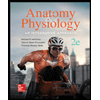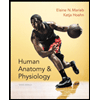None of the other answers. O Contract more quickly O Contain less myoglobin ESTION 4 muscle, when calcium is moving from the sarcoplasm to the sarcoplasmic reticulum, it is moving: D along its gradient using ion channels D against its gradient using pumps against its gradient using ion channels O along its gradient using pumps JESTION 5 n the heart, blood flows from: O artery to ventricle to atrium to vein O artery to atrium to ventricle to vein O vein to ventricle to atrium to artery vein to atrium to ventricle to artery
None of the other answers. O Contract more quickly O Contain less myoglobin ESTION 4 muscle, when calcium is moving from the sarcoplasm to the sarcoplasmic reticulum, it is moving: D along its gradient using ion channels D against its gradient using pumps against its gradient using ion channels O along its gradient using pumps JESTION 5 n the heart, blood flows from: O artery to ventricle to atrium to vein O artery to atrium to ventricle to vein O vein to ventricle to atrium to artery vein to atrium to ventricle to artery
Human Anatomy & Physiology (11th Edition)
11th Edition
ISBN:9780134580999
Author:Elaine N. Marieb, Katja N. Hoehn
Publisher:Elaine N. Marieb, Katja N. Hoehn
Chapter1: The Human Body: An Orientation
Section: Chapter Questions
Problem 1RQ: The correct sequence of levels forming the structural hierarchy is A. (a) organ, organ system,...
Related questions
Question

Transcribed Image Text:**Question 3**
Compared to the muscle fiber type that readily fatigues, fatigue-resistant muscle fibers:
- Have fewer mitochondria
- None of the other answers
- Contract more quickly
- Contain less myoglobin
**Question 4**
In muscle, when calcium is moving from the sarcoplasm to the sarcoplasmic reticulum, it is moving:
- Along its gradient using ion channels
- Against its gradient using pumps
- Against its gradient using ion channels
- Along its gradient using pumps
**Question 5**
In the heart, blood flows from:
- Artery to ventricle to atrium to vein
- Artery to atrium to ventricle to vein
- Vein to ventricle to atrium to artery
- Vein to atrium to ventricle to artery
Expert Solution
Step 1
The two types of skeletal muscle fibers are slow-twitch (type I) and fast-twitch (type II). Twitch” refers to the contraction.
Step by step
Solved in 2 steps

Recommended textbooks for you

Human Anatomy & Physiology (11th Edition)
Anatomy and Physiology
ISBN:
9780134580999
Author:
Elaine N. Marieb, Katja N. Hoehn
Publisher:
PEARSON

Anatomy & Physiology
Anatomy and Physiology
ISBN:
9781259398629
Author:
McKinley, Michael P., O'loughlin, Valerie Dean, Bidle, Theresa Stouter
Publisher:
Mcgraw Hill Education,

Human Anatomy
Anatomy and Physiology
ISBN:
9780135168059
Author:
Marieb, Elaine Nicpon, Brady, Patricia, Mallatt, Jon
Publisher:
Pearson Education, Inc.,

Human Anatomy & Physiology (11th Edition)
Anatomy and Physiology
ISBN:
9780134580999
Author:
Elaine N. Marieb, Katja N. Hoehn
Publisher:
PEARSON

Anatomy & Physiology
Anatomy and Physiology
ISBN:
9781259398629
Author:
McKinley, Michael P., O'loughlin, Valerie Dean, Bidle, Theresa Stouter
Publisher:
Mcgraw Hill Education,

Human Anatomy
Anatomy and Physiology
ISBN:
9780135168059
Author:
Marieb, Elaine Nicpon, Brady, Patricia, Mallatt, Jon
Publisher:
Pearson Education, Inc.,

Anatomy & Physiology: An Integrative Approach
Anatomy and Physiology
ISBN:
9780078024283
Author:
Michael McKinley Dr., Valerie O'Loughlin, Theresa Bidle
Publisher:
McGraw-Hill Education

Human Anatomy & Physiology (Marieb, Human Anatomy…
Anatomy and Physiology
ISBN:
9780321927040
Author:
Elaine N. Marieb, Katja Hoehn
Publisher:
PEARSON